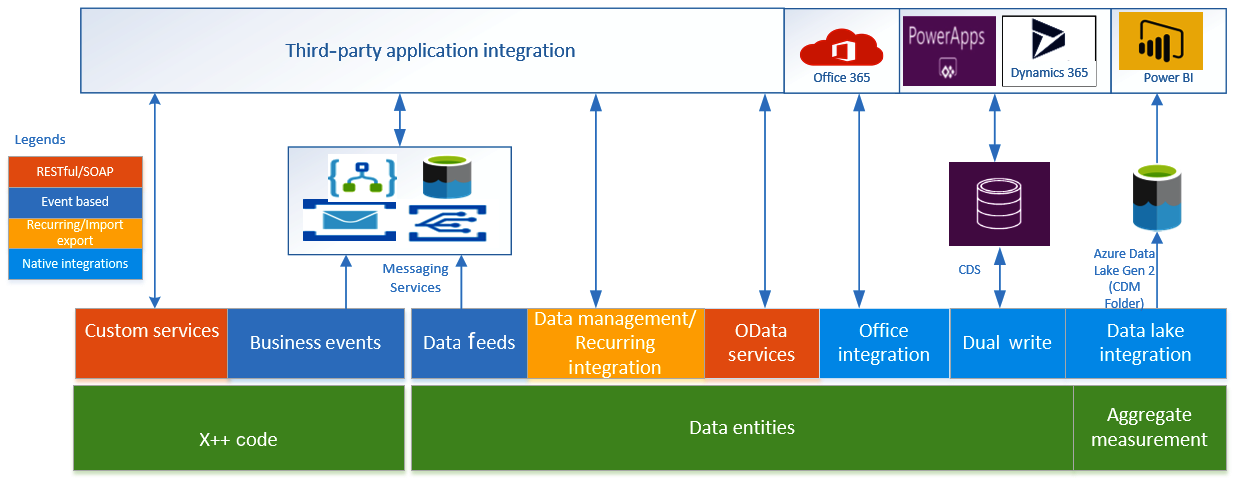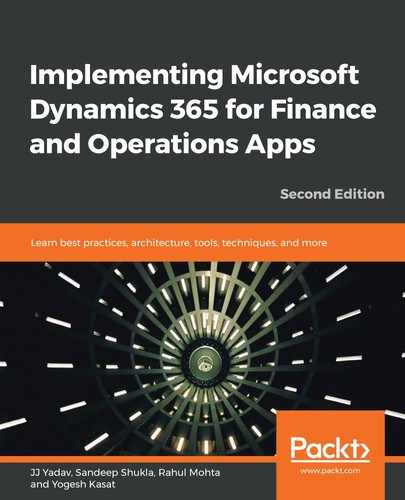Dynamics 365 for Finance and Operations supports numerous integration models to help integrate with third-party applications, as well as built-in native integration with Office 365, Power Platform, and Dynamics 365 applications. The following diagram shows the integration architecture concepts in Dynamics 365 for Finance and Operations:

As shown in the preceding diagram, there are various integration options and concepts available in Finance and Operations. These integration concepts can be better explained with the following categories:
- HTTP bases RESTful: Dynamics 365 for Finance and Operations provides an OData REST endpoint for all the data entities that are marked as public. It supports complete CRUD (short for create, retrieve, update, and delete) functionality that can be used to integrate with any third-party applications. Along with OData, custom X++ business logic can be exposed as a RESTful or Simple Object Access Protocol (SOAP)-based service.
- Event-based: The business events and data feeds feature can send near real-time event notification and data changes to generic consumers, such as Azure messaging services. External business applications and systems can subscribe to specific business events or data feeds using Azure messaging services and receive close to real-time events and data update from Finance and Operations.
- Recurring import/export: Dynamics 365 for Finance and Operations provides APIs for recurring data integration for bulk import/export integration scenarios. Recurring data integration patterns are based on the data management platform also used for application life cycles, such as configuration management and data migration.
- Native integration: Dynamics 365 for Finance and Operations provides built-in integration with Office 365 applications such as Excel and Word. The dual-write feature enables customers to integrate Finance and Operations data into their own CDS. This enables direct integration with Power Apps, and Dynamics 365 applications such as Sales, Services, and Talent. The Data Lake integration feature enables incremental export of Finance and Operations master and transaction data into the customer's own Azure Data Lake Storage Gen2 environments in Common Data Model (CDM) folder format, which can be further used by Power BI dataflows to built rich analytical reports.
Integration for business applications is a big topic and cannot be covered in a couple of paragraphs. We have a dedicated chapter, Chapter 8, Integration Technologies, Planning, and Design, to learn more about integration architecture, concepts, and best practices.
